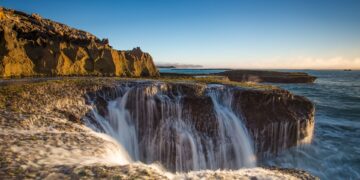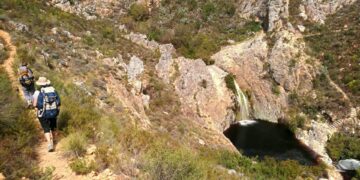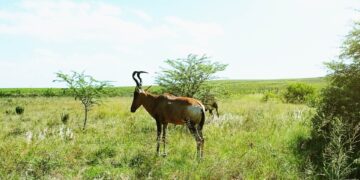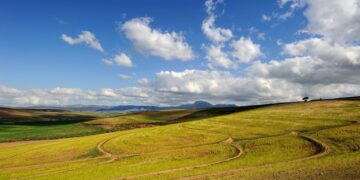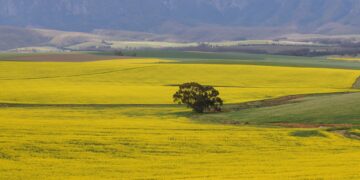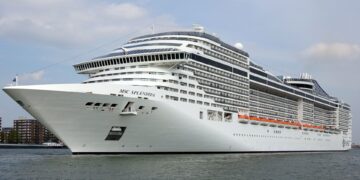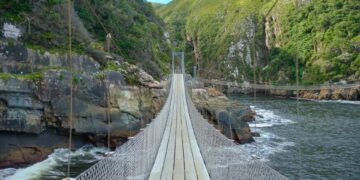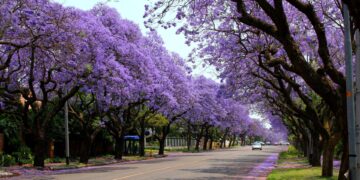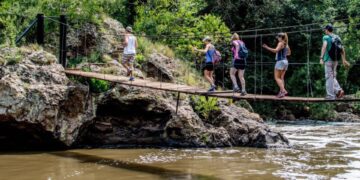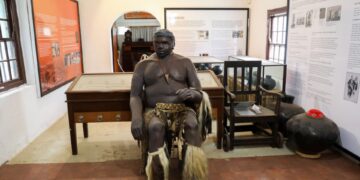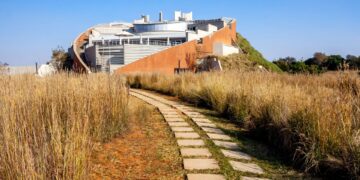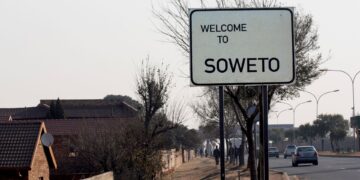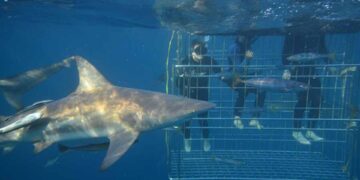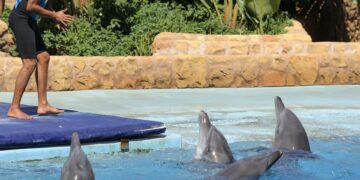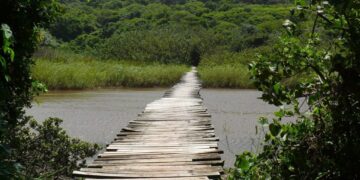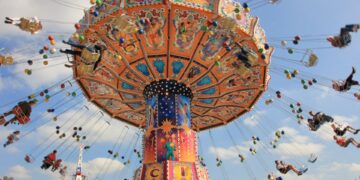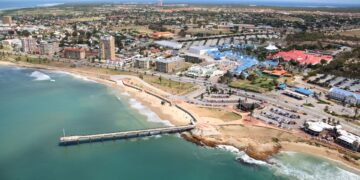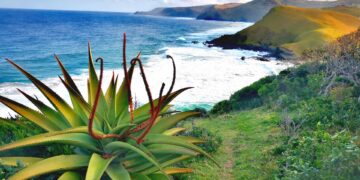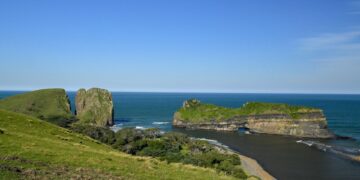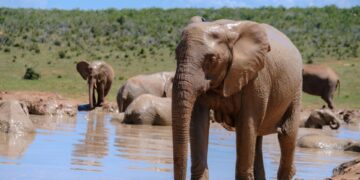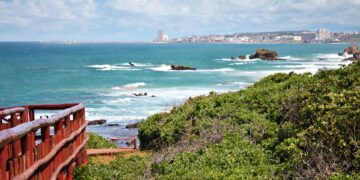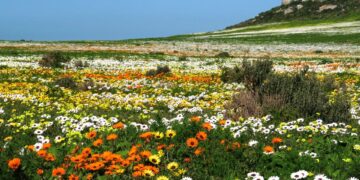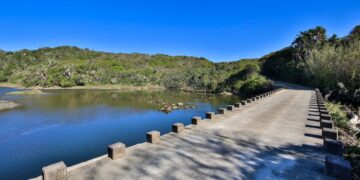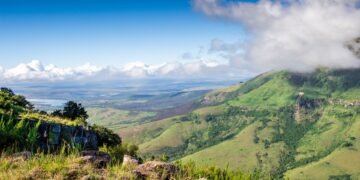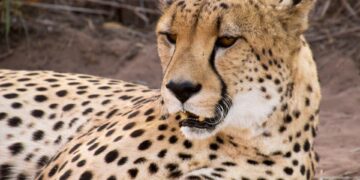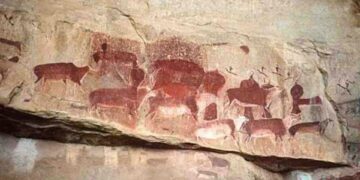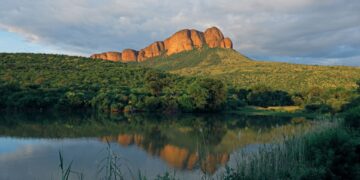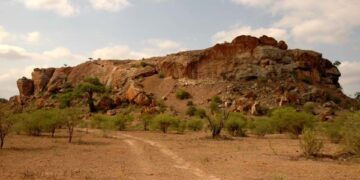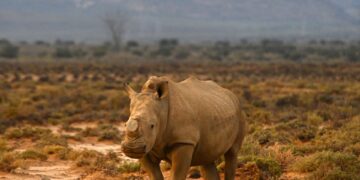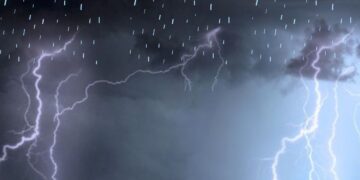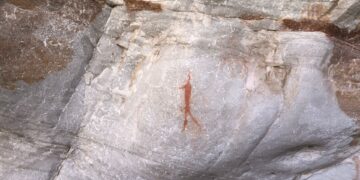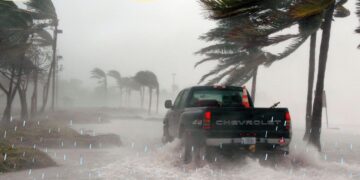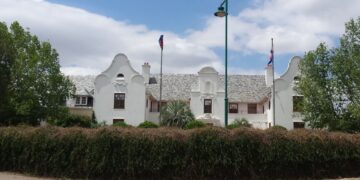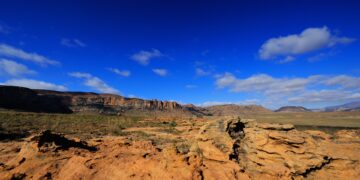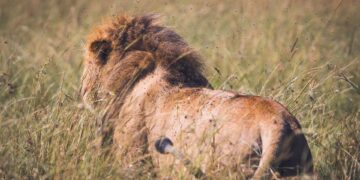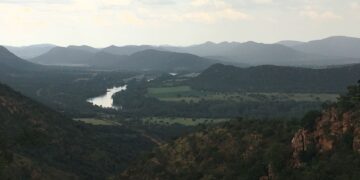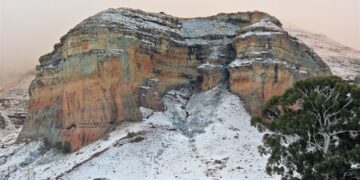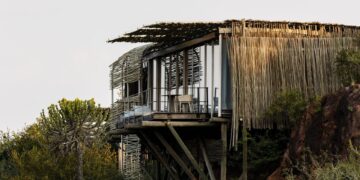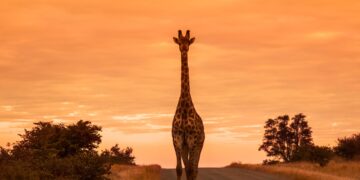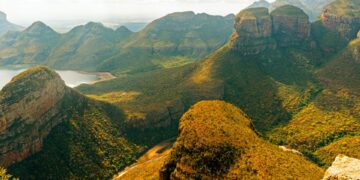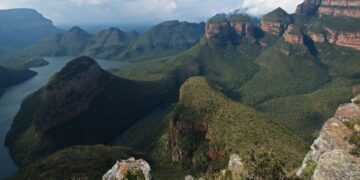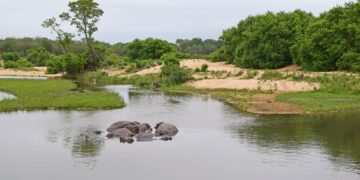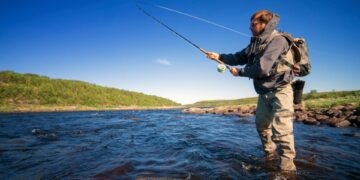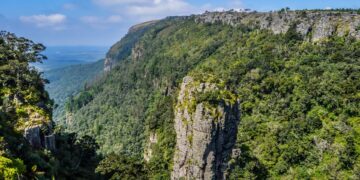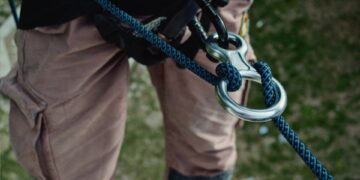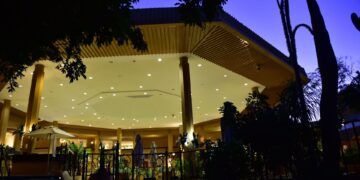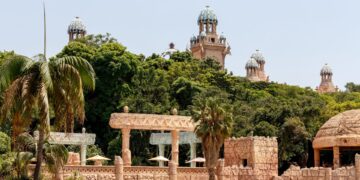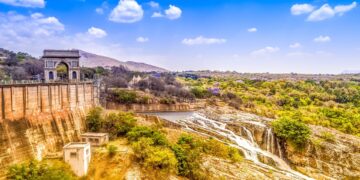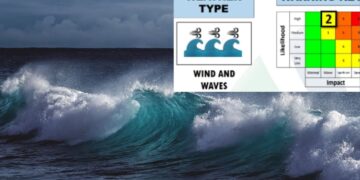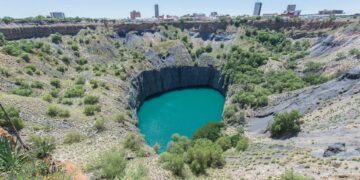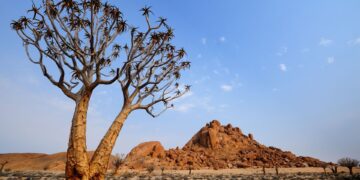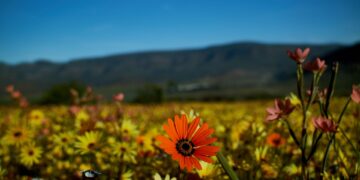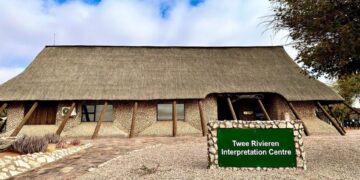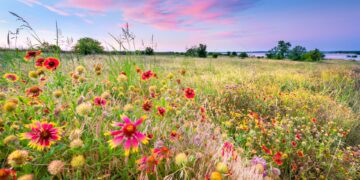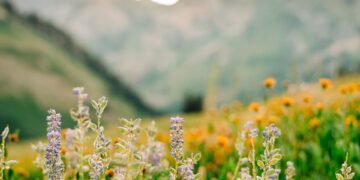While the Northern Cape generally attracts travellers to its wide array of unique geographical features, this isn’t to say that the province lacks recreational activities. On the contrary, between the region’s small town charm and rich cultural history, visitors are not left wanting for meaningful human encounters.
Augrabies Falls National Park
Why you should visit: Named “Ankoerebis” – meaning “place of big noises” – by the native KhoiKhoi inhabitants, the Augrabies Falls National Park features one of South Africa’s greatest natural wonders; a 60-metre-high waterfall which appears as an oasis in the otherwise bone-dry surrounds.
The magnificent Augrabies waterfall descends into a gorge below, which is about 240 metres deep and runs for 18 kilometres. The water gushes over the crest at approximately 313 cubic metres per second.
How to get there: The national park is located 120km west of Upington and straddles the mighty Orange River. To get there, travel west from Upington on the N14 highway and then get on the R359 north, which takes you right to the park’s entrance.
Richtersveld
Why you should visit: The Richtersveld region, located in the extreme north-west of South Africa, is, itself, defined by extremes. From flat, sandy expanses, to sharp volcanic-rock formations, the desert region is regarded as the only arid biodiversity hotspot on earth.
Despite its seemingly inhospitable demeanour, the area, especially nearer to the Orange River, is teeming with wildlife and endemic plant life. The area is also home to the resilient Nama people who have adapted to the harsh conditions over thousands of years – cultural value has given the Richtersveld a spot on UNESCO’s World Heritage List. The Richtersveld provides the perfect all-encompassing Northern Cape experience – that of both cultural and geographical distinctiveness.
How to get there: Richtersveld National Park shares a border with Namibia and is located approximately 180km north of Springbok.
Kgalagadi Transfrontier Park
Why you should visit: The Kgalagadi Transfrontier Park straddles the border between South Africa and Botswana and, as such, is actually comprised of two entities; Kalahari Gemsbok National Park in South Africa and Gemsbok National Park in Botswana. This wildlife and nature conservancy area offers a true taste of the Southern African Kalahari, typified by rolling red sand dunes and sporadic pockets of hardy vegetation.
If a Kalahari animal safari is what you’re after, the park is home to lions, cheetahs, leopards, and hyenas.
How to get there: The Kgalagadi Transfrontier Park is nestled in the northernmost reaches of the Northern Cape, in the stretch of South African territory between Namibia and Botswana. The park is located approximately 250km due north of Upington. To experience its full splendour, you’ll need to cross over into Botswana, which houses nearly three quarters of the park.
Eye of Kuruman
Why you should visit: The humble town of Kuruman, located on the eastern reaches of the Northern Cape, is a scenic phenomenon, regarded as the “Oasis of the Kalahari”. The Eye of Kuruman plays a central role in this description. Cited as one of the largest natural springs in the Southern Hemisphere, the Eye of Kuruman, which forms a lake in the centre of the town, is also known for its impressive dolomite cave and unique cliff formation.
How to get there: The clear-water lake can be found in the centre of town, while the dolomite caves are nestled between Danielskuil and Kuruman about 200km north of Kimberley.
Namaqua National Park
Why you should visit: The Namaqua National Park is a natural wonder of colour amongst the dry earth of the Northern Cape. The semi-desert region draws thousands of visitors to its annual spring bloom, which transforms the landscape into a colour tapestry of wildflowers. The Succulent Karoo biome – which homes the highest concentration of succulent plants of any of the world’s arid regions – stretches along South Africa’s west coast, just south of Namibia.
How to get there: Namaqua National Park is located approximately 500km north of Cape Town and 22km northwest of the small Namaqualand town of Kamieskroon on the N7 highway.
Tankwa Karoo National Park
Why you should visit: If you’re searching for the “middle of nowhere”, then the Tankwa Karoo is just for you. One of the hottest and most isolated regions of the country, the Tankwa Karoo stretches as far as the eye can see. It’s no wonder, then, that local and international travellers alike converge on this area for the annual Afrikaburn event as the greatest escape from the comforts of urban modernity.
How to get there: The Tankwa Karoo National Park is located on the border of the Western and Northern Cape, west of Sutherland and south of Calvinia. Follow the R355 and get ready for seemingly endless dirt road travel.
Stargazing in Sutherland
Why you should visit: Explore the night sky in all its brilliance at South Africa’s stargazing hub, Sutherland. The isolated town of Sutherland lies in the western Roggeveld Mountains of the Karoo and is home to the South African Astronomical Observatory. The Southern African Large Telescope (SALT) – the largest optical telescope in the southern hemisphere – is perfectly positioned to investigate the universe above. In addition to being the country’s astronomical hub, Sutherland is also regarded as the coldest place in South Africa – so dress warmly!
How to get there: Sutherland is located just east of the Tankwa Karoo National Park, near the border of the Northern Cape and Western Cape. About 350km away from Cape Town, the best route to take is the N1 highway and the R354 exit at Matjiesfontein.
Hakskeen Pan
Why you should visit: The Hakskeen Pan is a dry lake bed situated in the extreme north of the Northern Cape. The Kalahari salt pan, which covers an area of approximately 140 km2, is the world’s largest unworked salt pan. Due to its immense size and flat surface area, Hakskeen Pan has played host to high-speed motoring events – with the British-based Bloodhound SSC team hoping to set a new land speed record – 1 600 km/h – on the pan sometime in the near future.
How to get there: Hakskeen Pan is located near the Namibian border, approximately 250km north of Upington. Travel on the R360 and join the R31 outside Askham to reach the isolated region.
The Big Hole in Kimberley
Why you should visit: Arguably the most iconic landmark of the Northern Cape – a remnant of the province’s illustrious past – the Big Hole, located in Kimberley, draws visitors from across the globe.
The great diamond rush of 1871 brought thousands of miners to the town of Kimberley – which, at that stage, was named New Rush. Over the course of 40 years, miners dug, by hand, 240 metres deep and 463 metres wide. In the arduous process, over 2 720kg of diamonds were excavated – making colourful mining magnates, like the infamous Barney Barnato, extremely wealthy.
Mining operations stopped in 1914 and, today, the Big Hole remains partially filled with water, undoubtedly Kimberley’s biggest attraction.
Daily tours are conducted – with the Big Hole’s rich history chronicled at Mine Museum and exhibitions centre. In addition, there’s an “Old Town” precinct nearby which depicts life in Kimberley in the late 19th century.
How much does it cost: Entrance fee to view the hole is R130 per person.
How to get there: The Big Hole is situated on S Circular road in Kimberley.
Sunset river cruise in Upington
Why you should experience it: As testament to the Northern Cape’s uniqueness and varied appeal, cruising along the mighty Orange River, in a province otherwise defined by dryness, ranks as a truly beautiful experience. The town of Upington, which is the main metro of the province’s northern reaches – we use the term “main metro” loosely here – is nestled along the banks of the Orange River, which provides the town with much-needed sustenance.
Affectionately named “Sakkie se Arkie”, the Upington river boat sails down the Orange at sunset – offering a reprieve from the notoriously hot Northern Cape days. A smaller “river taxi” is also available to take tourists on short cruises throughout the day.
How much does it cost: Tickets cost R150 per adult and R80 for kids aged two to 16.
How to get there: Sakkie se Arkie can be found on Park Street in Upington.
Meet the ‡Khomani San
Why you should experience it: Commonly regarded as Southern Africa’s “First People” – with scientific evidence pointing back between 1 500 and 2 000 years ago – the Khoisan are indigenous to the Kalahari. Their nomadic lifestyle, exemplified by hunting and gathering in the arid region, stands as the ultimate testament to adaptive resilience – a theme which runs throughout the Northern Cape.
The arrival of other tribes, centuries ago, pushed the San further into the desert regions of South Africa. The ‡Khomani San, who now live in the south-western tip of the Kgalagadi Transfrontier Park, are descendents from several original San groups. The ‡Khomani are the last surviving indigenous San community in the country and, through land claim negotiations with the government, have been afforded 28 000 hectares of land.
This land is protected by the government and the South African National Parks (SANParks) board, to allow the community – and visitors alike – to experience life in the Kalahari, as it was hundreds of years ago.
Visitors to the ‡Khomani San reserve are able to have meaningful engagements with the community, including storytelling sessions, tracking and trail outings and experience the “living museum”.
How much does it cost: Enquire at bookings@khomanisan.com for pricing of activities.
Orange River rafting
Why you should experience it: One of the longest rivers in Southern Africa, the Orange River, is the lifeblood which feeds the local economy, specifically, vital agricultural sectors. It weaves its way through South Africa, starting in the mighty Drakensberg mountains, flowing west for over 2 000km, eventually emptying out into the Atlantic Ocean near the Namibian border.
Before the river flows into the ocean, it gives rise to a variety of unique geographic features in the Northern Cape – particularly the great Augrabies Falls.
The best way to explore the full potential of the Orange River – and, in doing so, attain a higher appreciation for its immortal majesty – is to traverse its waters in the Richtersveld and the Ai-Ais Transfrontier Park which forms the border between South Africa and Namibia.
Orange River Rafting affords the adventurous a truly breath-taking experience, tailored to both the experienced and amateur rafters, with the river winding through canyons and mountain passes.
The journey along the river’s twists and turns is complete with scenic accommodation options alongside the Orange, wild camping is part of the true experience.
How much does it cost: Prices start from R580 for a half day rafting adventure, up to R5 000 for a six-day trip.
Kalahari Safari
Why you should experience it: What is a trip to Africa without an authentic safari experience? Luckily, the Northern Cape offers plenty of opportunities, across a wide variety of landscapes and backdrops. Though arid, the Kalahari is still home to an abundance of wildlife.
The Kgalagadi Transfrontier Park and its surrounds provide safari-goers with an all-encompassing experience. Guided tours offer you the chance to see the Kalahari’s most famous predators, including; lions, cheetahs, leopards and packs of African wild dogs. Other animals to look out for include; rhinos, giraffes, elephants and wildebeest.
The choice to camp out under the stars or experience the comfort of a luxurious safari lodge is yours to make. Whatever you choose, you’ll be treated to an equally satisfying and memorable safari experience in the Kalahari of the Northern Cape.



